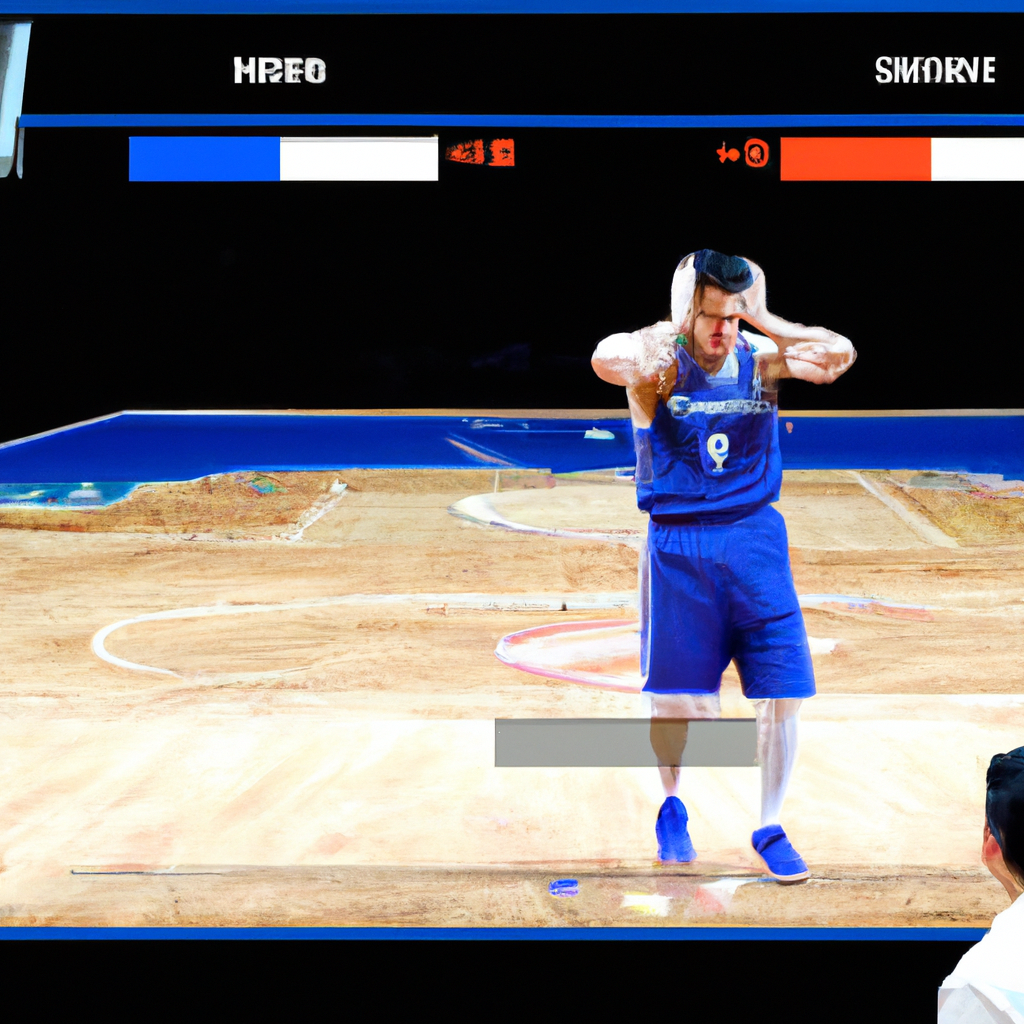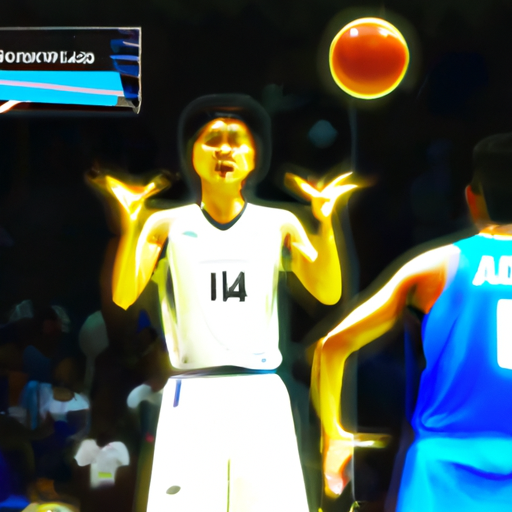Chot takes the blame for abysmal Gilas FIBA World Cup stint

Chot Reyes’ Leadership and Decision-Making: Analyzing the Impact on Gilas’ Performance
Chot Reyes’ Leadership and Decision-Making: Analyzing the Impact on Gilas’ Performance
The recent FIBA World Cup stint of the Philippine national basketball team, Gilas Pilipinas, has been nothing short of disappointing. With a winless record and a last-place finish in their group, many fans and analysts have been quick to point fingers and assign blame. One name that has come up repeatedly is Chot Reyes, the head coach of Gilas.
Reyes, a well-respected figure in Philippine basketball, was tasked with leading the team to success in the World Cup. However, his leadership and decision-making have been called into question, as they seemed to have a significant impact on the team’s performance.
One of the main criticisms of Reyes is his questionable roster selection. Many fans and experts believe that he failed to assemble the best possible team for the tournament. Some key players were left out, while others who were included did not seem to fit well with the team’s style of play. This lack of cohesion and chemistry was evident in their games, as the team struggled to find a rhythm and execute their game plan effectively.
Furthermore, Reyes’ decision to rely heavily on a small-ball lineup also raised eyebrows. While this strategy may have worked in the past, it seemed ill-suited for the physicality and size of the international competition. Opposing teams exploited this weakness, dominating the boards and scoring at will in the paint. The lack of a dominant big man was glaring, and it ultimately cost Gilas dearly.
Another aspect of Reyes’ leadership that has been criticized is his in-game decision-making. There were instances where his substitutions and play-calling seemed questionable, leading to missed opportunities and costly turnovers. Some fans argue that his coaching style lacked adaptability, as he failed to make necessary adjustments during games. This rigidity in his approach hindered the team’s chances of mounting comebacks or staging upsets against stronger opponents.
Moreover, Reyes’ handling of player rotations and minutes distribution has also been a point of contention. Some players who were expected to play significant roles were given limited playing time, while others who struggled on the court were allowed to stay in the game for extended periods. This inconsistency in player management further disrupted the team’s chemistry and hindered their chances of finding a rhythm.
Despite the criticisms, it is important to acknowledge that coaching a national team is a challenging task. The pressure to perform and the expectations from fans and stakeholders are immense. It is also worth noting that Reyes has had success in the past, leading Gilas to several victories and podium finishes in international competitions.
However, the recent World Cup stint has highlighted the need for a thorough evaluation of Reyes’ leadership and decision-making. It is crucial for the Philippine basketball community to reflect on the team’s performance and identify areas for improvement. This includes not only the coaching staff but also the players, the basketball federation, and the overall system in place.
In conclusion, Chot Reyes’ leadership and decision-making have come under scrutiny following Gilas’ abysmal performance in the FIBA World Cup. The questionable roster selection, reliance on a small-ball lineup, and questionable in-game decision-making have all contributed to the team’s lackluster showing. While it is important to acknowledge Reyes’ past successes, it is equally important to evaluate and address the shortcomings in order to improve the team’s future performances.
The Role of Player Selection and Training in Gilas’ FIBA World Cup Performance

The recent FIBA World Cup performance of the Philippine national basketball team, Gilas, has been nothing short of disappointing. With a winless record and finishing dead last in the tournament, there has been much speculation and analysis as to what went wrong. One of the key factors that has come under scrutiny is the role of player selection and training.
Gilas’ head coach, Chot Reyes, has taken the blame for the team’s abysmal performance. In a press conference following their final game, Reyes admitted that he made mistakes in selecting the players for the tournament. He acknowledged that he may have overlooked certain key players who could have made a significant impact on the team’s performance.
Player selection is a crucial aspect of any sports team, and it is no different for Gilas. The FIBA World Cup is a highly competitive tournament, featuring some of the best basketball players from around the world. It requires a careful evaluation of each player’s skills, experience, and ability to perform under pressure. Unfortunately, it seems that some of the players chosen for Gilas did not meet these criteria.
In addition to player selection, training plays a vital role in preparing a team for a tournament of this magnitude. The intensity and level of competition in the FIBA World Cup are unparalleled, and teams must be well-prepared both physically and mentally. However, it appears that Gilas may have lacked the necessary training and preparation leading up to the tournament.
Transitional phrase: Furthermore, the lack of chemistry among the players was evident on the court.
Chemistry among teammates is crucial in any team sport, and basketball is no exception. Players need to have a good understanding of each other’s playing style, strengths, and weaknesses. This allows for better coordination and teamwork on the court. Unfortunately, it seemed that Gilas struggled to find their rhythm and cohesion throughout the tournament.
Another factor that may have contributed to Gilas’ poor performance is the absence of key players due to injuries. Injuries are an unfortunate reality in sports, and they can significantly impact a team’s performance. Gilas had to make do without some of their key players, which undoubtedly affected their overall gameplay.
Transitional phrase: Despite these challenges, it is important to acknowledge the efforts of the coaching staff and players.
Preparing a team for a tournament like the FIBA World Cup is no easy task. The coaching staff and players put in countless hours of hard work and dedication to represent their country on the international stage. While the results may not have been what they had hoped for, it is essential to recognize their efforts and commitment.
Moving forward, it is crucial for Gilas to learn from this experience and make the necessary adjustments. Player selection should be more thorough, taking into account not only individual skills but also the ability to work well within a team. Training should be intensified, focusing on improving physical conditioning, tactical strategies, and mental resilience.
Transitional phrase: In conclusion, the role of player selection and training cannot be underestimated in a team’s performance in the FIBA World Cup.
Gilas’ abysmal performance in the recent FIBA World Cup has shed light on the importance of player selection and training. It is a reminder that these factors play a significant role in a team’s success or failure in a highly competitive tournament. With the right approach and adjustments, Gilas can bounce back and regain their standing as a formidable force in international basketball.
Lessons Learned: Strategies for Future Success in International Basketball Competitions
Chot Reyes, the head coach of the Philippine national basketball team, Gilas Pilipinas, has taken full responsibility for the team’s abysmal performance in the recent FIBA World Cup. The team, which had high hopes of making a strong showing in the tournament, failed to advance past the group stage, finishing with a disappointing 0-5 record.
In a press conference following the team’s elimination, Reyes acknowledged that he made several mistakes in his coaching decisions, which ultimately contributed to the team’s poor performance. He admitted that he underestimated the level of competition in the tournament and failed to adequately prepare the team for the challenges they would face.
One of the key lessons learned from this experience is the importance of thorough scouting and preparation. Reyes admitted that he did not have enough information about the opposing teams and their playing styles, which put Gilas at a significant disadvantage. In future international competitions, it will be crucial for the coaching staff to invest more time and effort in scouting their opponents and developing game plans that exploit their weaknesses.
Another lesson learned is the need for a more balanced and versatile roster. Reyes acknowledged that he relied too heavily on a few key players, which made the team predictable and easier to defend against. In international competitions, where teams are stacked with talented players from around the world, it is essential to have a deep roster with players who can contribute in different ways. This will not only provide more options on offense but also allow for better defensive matchups against opponents with diverse playing styles.
Furthermore, the importance of mental toughness cannot be overstated. Reyes admitted that the team struggled with maintaining composure and focus during crucial moments of the games. This lack of mental fortitude resulted in missed opportunities and costly turnovers. Moving forward, it will be essential for the coaching staff to instill a strong sense of mental resilience in the players, ensuring that they remain calm and composed under pressure.
In addition to these specific lessons, the overall experience of the FIBA World Cup has highlighted the need for a more comprehensive and long-term approach to developing basketball talent in the Philippines. While the country has a rich basketball culture and passionate fans, there is a need for more investment in grassroots development programs and youth academies. This will help identify and nurture young talents from an early age, providing them with the necessary skills and experience to compete at the international level.
In conclusion, Chot Reyes has taken full responsibility for Gilas Pilipinas’ disappointing performance in the FIBA World Cup. The lessons learned from this experience include the importance of thorough scouting and preparation, the need for a balanced and versatile roster, the significance of mental toughness, and the necessity for a more comprehensive approach to talent development. By implementing these strategies, the Philippine national basketball team can hope for future success in international competitions.

